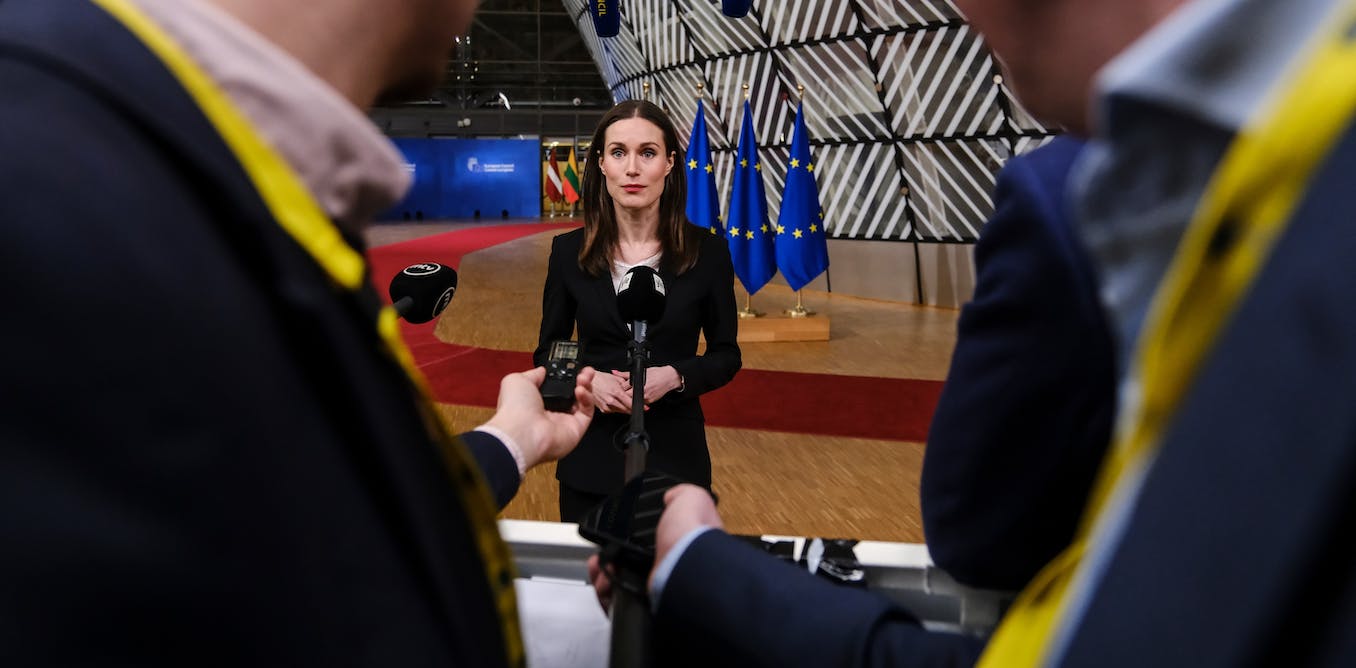A video of Finnish Prime Minister Sanna Marin dancing at a party was leaked in August 2022. There was massive media reaction to what was, essentially, a young female politician having a good time. Accusations spread like wildfire, to the point where she had to take a drug test in order to quell speculation about her personal life.
Although Marin was cleared of any wrongdoing, she has subsequently left office, having lost the April 2023 general election in Finland. It is difficult to imagine that the negative media attention she received months earlier had no impact on her result at the ballot box.
Reporting on female politicians is often less favourable than that on men, with more attention to physical appearance and personal or family life and less to policy issues and leadership traits. Politicians even try to encourage this imbalance to discredit their opponents, but they are not always successful.
Numerous academics have examined whether certain types of coverage have a different effect on voters for male and female political candidates. In our research, we compiled their studies in order to answer the question of which types of media reporting hurt or reward female politicians disproportionately.
We collected all existing studies that tested the impact of media messages where a politician’s gender is mentioned or highlighted. There was a lot of data: 50 experiments, with 671 evaluation outcomes based on over 23,000 participants in North America, Europe, and South Korea. We focused on assessing which types of media coverage result in different evaluations of male and female candidates.
Our meta-analysis reveals four key insights into how the media affects male and female political candidates.
Voters are not naturally biased
Our first finding was that, by and large, voters are not inherently biased when it comes to a candidate’s gender. Many types of media messages had a similar impact on voter’s evaluations of both male and female candidates. This fits well within the overall idea of gender similarities, and has been backed up by evidence from other election surveys and experiments.
This leads us to conclude that media coverage of politicians plays a big part in the evaluation of male and female candidates.
Reinforcing prejudices
When media coverage does have an impact on perceptions of male and female politicians, it mainly strengthens pre-existing stereotypical beliefs about gender. Men are assumed to be more ambitious, level-headed and goal-oriented. Women, on the other hand, are typically thought to be more emotional, caring and cooperative – a set of traits that we call “communality” in our analysis.
These assumptions affect the way voters see their policy strengths. Men are typically thought to be good at handling what are seen as masculine issues, such as economic crises or terrorist threats. Women, on the other hand, are thought to be better with policy issues such as welfare, health or education.
Some media coverage exacerbates these beliefs. We found that when the media talks about a candidate expressing emotion, it increases perceptions of communality among female candidates more than male, meaning they are seen as caring but lack the ability to make objective decisions. The same type of coverage therefore has different impacts on how voters perceive male and female candidates.
Similarly, media reporting on a candidate’s personality also widens the gender gap, especially when it focuses on stereotypically masculine or feminine traits. Coverage of a candidate’s children in particular reinforces the assumption that female candidates are better at dealing with “feminine policy issues”.
Therefore, when the media pays attention to politicians, it reaffirms stereotypical expectations of gender roles, and the masculinity of the political domain.
Attention that harms female candidates
Some media messages directly hurt female politicians’ chances at the ballot box. Discussions of their appearance or families were two areas that triggered especially unequal responses between male and female candidates. Media responses to Sanna Marin’s sartorial style in a 2020 photo shoot are a prime example of this, while UK politicians Nicola Sturgeon and Theresa May received similar treatment in 2017.
Attractiveness was found to play a somewhat unexpected role, as any type of coverage evaluating female politicians’ attractiveness – whether negative, neutral or positive – had a negative impact on voter preferences. Thus, attention to appearance of any kind is disproportionately harmful to female candidates.
Not all attention is bad attention
We also found that there are, in fact, media messages that reward female candidates compared to their male counterparts, such as campaign attacks. When the media report on these, female politicians are punished less strongly then male candidates. For instance, a negative campaign advertisement emphasising the corrupt and immoral behaviour of a male candidate was more effective at lowering vote intentions than the same message about a female candidate.
This kind of media attention tends to lean heavily on blatant gender stereotypes or sexism. This often leads voters to overcompensate in favour of a female candidate, and they can even can spark feelings of protectiveness towards them. This is a very clear example of benevolent sexist attitudes at play.
Good news and bad news
There is good and bad news in these findings. The good news is that in most instances voters do not systematically discriminate between male and female candidates. This should, theoretically, mean better representation for women in political office.
The bad news is that when voters respond differently to media messages about male or female candidates, it tends to reaffirm stereotypes and in some cases hurt them electorally. This comes on top of the fact that political media is already biased against women, giving them less attention overall, and focusing on their personal lives. This means that when voters do discriminate based on gender, it is almost always to the detriment of female candidates.



